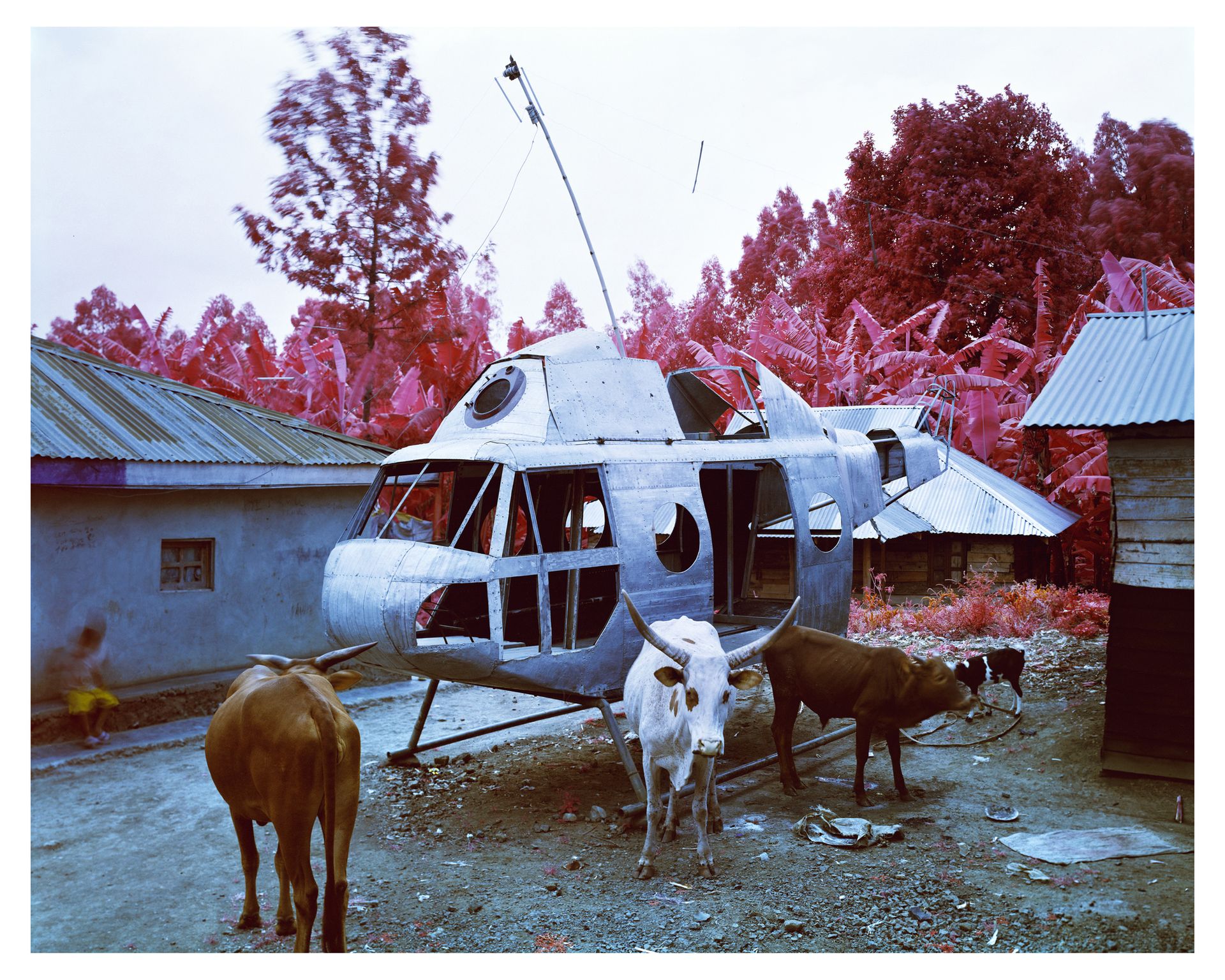At the Museum of the Moving Image in Queens, New York, there is a portrait of Dean Martin with his eyes and mouth removed by what look like cigarette burns. Self Portrait of You + Me, Dean Martin 01 (2007) by Douglas Gordon looks like a publicity still for a zombie movie.
It might as well be one. The exhibition Walkers: Hollywood Afterlives in Art and Artefact takes its title from the television series The Walking Dead. The exhibition’s premise is that the images, stories and mountains of promotional detritus from movies lurk like zombies in our consciousness and in the purgatory of used bookstores and websites. The works on view show how artists make these memories ooze up from the crypt, even as cinema is said to be dying.
To put it differently, is there life after Cary Grant? Absolutely—especially for Cary Grant.
Among the 163 works are strobe-lit projections of leading men and women in the films of Alfred Hitchcock, with glimpses of screen kisses by Grant and a range of elegant stars. This visual remix, titled Gravity (2007), is the work of Nicolas Provost. The romantic music of Bernard Herrmann throbs at a high volume through the emotional crescendos that Provost compresses into flashing sight-bites.
Varied and erudite, the cerebral show is “written and directed” by the collector Robert Rubin and wedged into a tight exhibition space upstairs from the museum’s auditorium.
The film memorabilia ranges from a script for John Ford’s The Searchers (1956) to a 1972 picture by Richard Avedon of Ford with an eye-patch (an affectation). Another work by Avedon depicts an ageing Groucho Marx. Other items include figurines of characters from Scarface (1983) collected by the artist Mario Ybarra and Incognito (2003), a life-size wax sculpture of the pioneering writer and director Melvin van Peebles by Isaac Julien.
The big screen is inspiration for artists including Richard Prince, who has appropriated a photo of Bob Hope golfing with a chimpanzee. In a sendup of Kasimir Malevich called You Bet Your Life (2010), Prince scrambles Constructivist lines and triangles until they form a caricature of Groucho Marx.

For an exhibition about a medium shaped and threatened by technology, the show is surprisingly low-tech—more bricolage than bit-rate. A case in point is a guerilla tribute to Hitchcock. In Video Hacking (1999), Manuel Saiz rents a VHS cassette of the 1959 classic North by Northwest and adds his own aesthetic refinement. Films are sampled these days by savvy hackers like Saiz, but his stealth operation deflates the myth of the director as auteur. “I don’t do this for money,” Saiz says in Spanish in the no-budget video, wearing a wool mask to conceal his identity. “I just want people to know that art is never fixed.”
Julien’s sculpture of Peebles, Incognito, is nothing if not an homage. Peebles pioneered autonomous Black cinema in the 1960’s and 1970’s. Julien’s wax monument is as realistic as van Peebles is underappreciated. Memory and history are fallible, we are reminded. The public doesn’t want to see old stars—too much a reminder of their own mortality.
In Gregory Crewdson’s photographs of the backlots of Cinecittà (2009), the vast movie studio in Rome, we see that history in screen epics isn’t history. Now that the Italian sex, sword and sandal melodramas of the 1960’s are a genre that is disparaged if not entirely forgotten, the undecorated imperial facades of Cinecittà in Crewdson’s pictures are dusty and deserted hulks—ruins of an earlier civilisation.
We also see posters—the “art” product of Hollywood—for a never-made Orson Welles rendition of Heart of Darkness, with a river winding through a landscape of skulls. (When that film could not be produced, Welles made Citizen Kane instead in 1941.) On view also are elaborate drawings for Playboy bunny costumes worn in Francis Ford Coppola’s twist on Joseph Conrad's novel, Apocalypse Now (1979).
Down the wall are photographs of a deserted Congo landscape by Richard Mosse (Heart of Darkness, 2012), where vegetation is a radiant, reddish purple. In his photographs and films, the colourised landscape of death is mute, as cows circle the shell of a wrecked helicopter.
Don’t rule out sequels to Walkers, at least not until we run out of artists who grew up with Psycho (1960), The Godfather (1972) and Pulp Fiction (1994).
David D’Arcy is a correspondent for The Art Newspaper.
Walkers: Hollywood Afterlives in Art and Artifact, Museum of the Moving Image, New York, until 10 April

